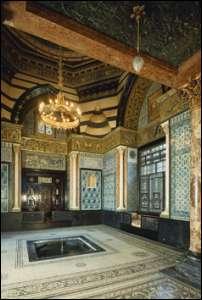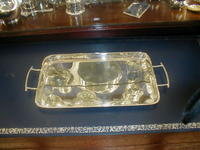
The sales are on in London and one of my favourite places to go to hunt for bargains is Kensington High Street. Sure, it has neither the posh of Bond Street, the cutting edge of Notting Hill nor the sheer volume of Oxford Street but I always do well there. Between H&M, Zara, Marks & Spencer and Habitat and others, I have no problem finding those bargains that make the London sales fun and really affordable. After a morning of shopping and a quick lunch at Wagamama http://www.wagamama.com/ , I try to leave time for one of my favourite small museums, Leighton House, which can be found minutes away from the busy Kensington High Street.
On a recent visit to Leighton House, the former home and studio of Frederic, Lord Leighton (1830 - 1896), a leading painter of the day, I had the museum to myself. This is a wonderful place to go if you are looking for a sophisticated take on the Victorian experience and a particularly good place to visit if you like to imagine what it would have been like to live as an artist or intellectual of the day.
As an eminent artist and former President of the Royal Academy, Leighton surrounded himself with sumptuous decoration. The centrepiece of this private world, the Arab Hall shown in the photo, was originally built to display Leighton's priceless collection of Islamic tiles, most from Damascus. The sound of water in a fountain set surprisingly in the centre of the floor, emphasizes the oriental mood. There is even a full wooden harem screen and balcony set into the ceiling and accessible from the floor above.
Along with the ancient tiles, there are also wonderful Victorian tiles created by the leading ceramicist of the time, William De Morgan as well as ceramics from China and Turkey.
In the dining room, which backs onto the extensive garden, you can feel what it would have been like to sit down to properly prepared meals served on china, linen and crystal in the company of other intellectuals and artists of the day such as Burne-Jones and Millais.
A short walk up the impressive staircase and you come to the artist’s studio. Even though it was a wet and dreary day for my visit, the enormous north facing window flooded the room with light. Again, you immediately sense that this was the place where the work was done, where intellectuals met and Leighton's renowned musical evenings took place.
The next time you are tired of shopping, beat a fast retreat to Leighton House in Kensington and commune with the Victorians in peace and pleasure. I highly recommend it.
Leighton House is open daily from 11:00 to 5:30 except Tuesdays, Christmas, Boxing Day and New Years.
http://www.rbkc.gov.uk/LeightonHouseMuseum/General/default.asp
12 Holland Park Road
020 7602 3316



